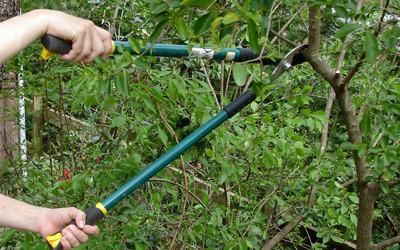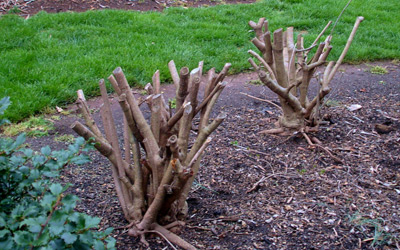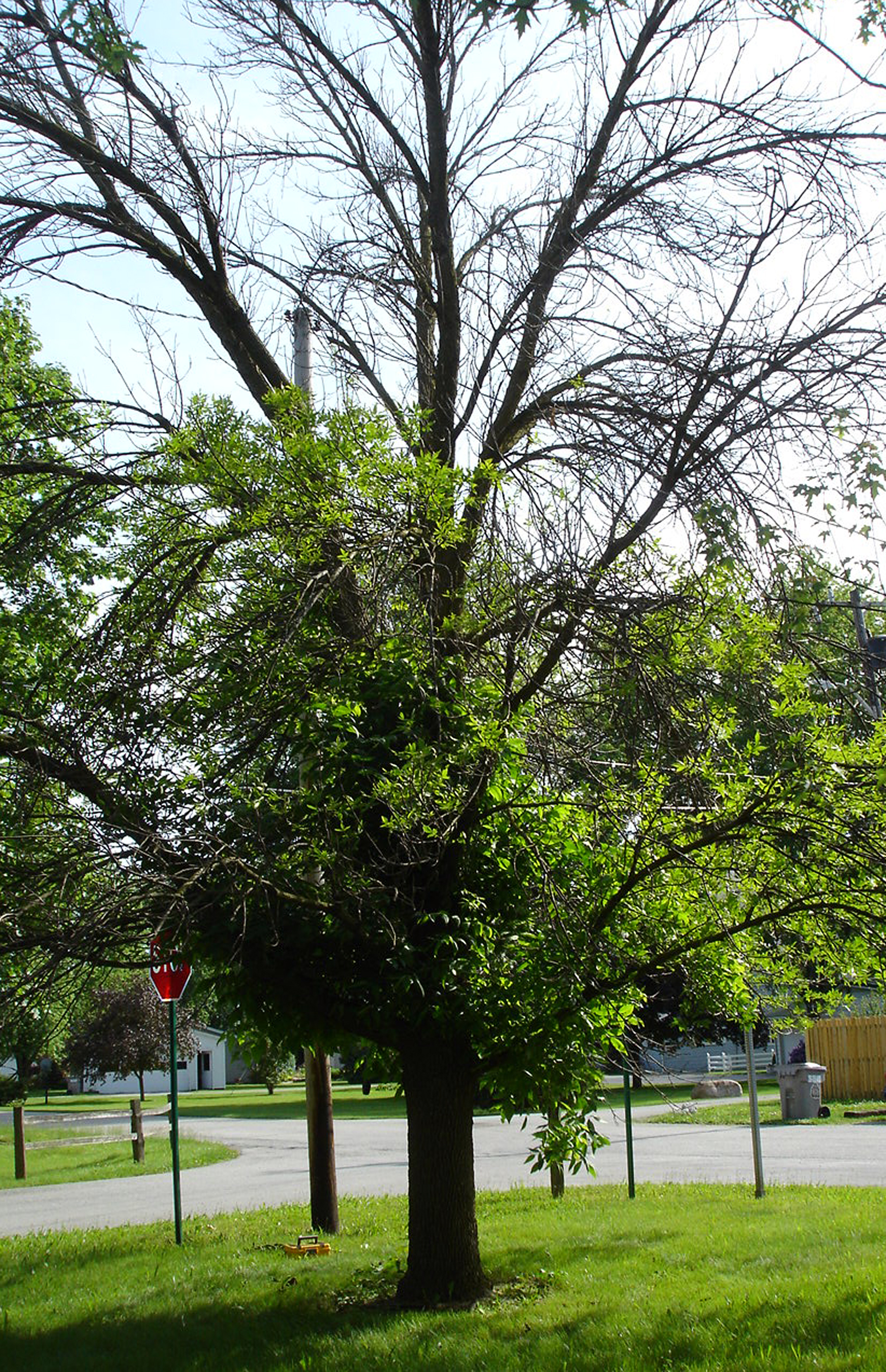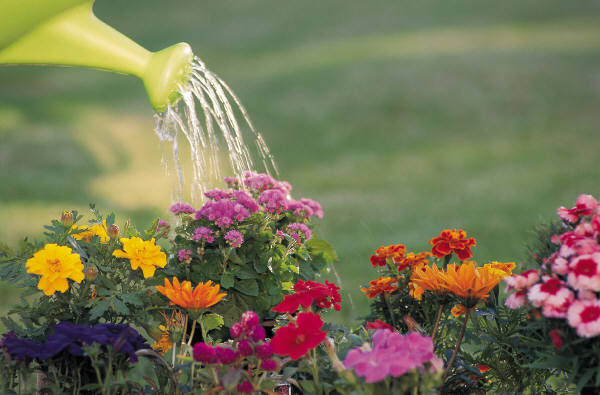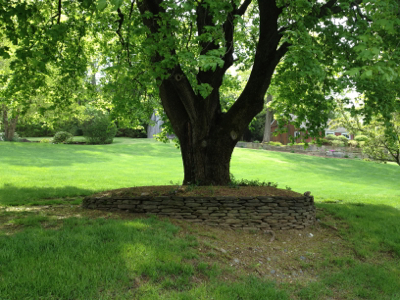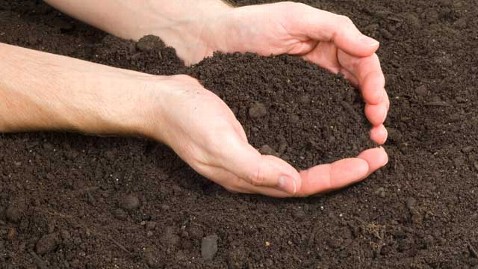Basic Shrub Pruning Techniques
Well pruned shrubs and trees are a hallmark of a carefully tended yard or garden. Foundation plantings are lush and full, and blooming shrubs display their blossoms on shapely branches that accentuate each plant’s unique style.
In addition to proper planting, watering, and fertilizing; pruning is an important practice for promoting plant health and enhancing the natural size and shape of landscape plants. Pruning is easy—a basic understanding of plant growth, and a few simple techniques, and you’ll be ready to go.
Tools
Most pruning tools have an arc-shaped blade, which makes short work of slicing through small branches. “Scissor action” pruners involve two sharp blades sliding past each other “Anvil cut” pruners have one blade slicing against a wide, flat surface. While scissor action pruners are more expensive, they usually make the cleanest, closest cuts.
Hedge clippers have long, straight blades. They are used for cutting small, green branches and tips and are best reserved for shearing formal hedges. Pruning saws come in a variety of shapes and sizes, with blades designed for larger branches and small trunks.
Make sure blades are kept sharp and oil them periodically. To prevent the spread of plant diseases, clean and disinfect pruning tools after use.
Proper Timing
Spring-flowering shrubs, such as these, should be pruned immediately after blooming:
- Andromeda
- Azalea
- Chinese Redbud
- Fringe Tree
- Kerria
- Mock Orange
- Philadelphus
- Pieris
- Roses
- Spiraea (early varieties)
- Mountain Laurel
- Viburnum
- Syringa (Lilac)
- Japanese Quince
- Pearlbush
- Star magnolia
- Weigela
- Rhododendron
- Deutzia
- Forsythia
- Lonicera
Shrubs that bloom in summer and fall, and shrubs grown primarily for their foliage, can be pruned in early spring, before growth starts:
- Abelia
- Callicarpa (Beauty Berry)
- Hydrangea
- Spirea (late varieties)
- Summersweet
- Crape Myrtle
- Snowberry
- Barberry
- Lagerstroemia
- Boxwood
- Buddleia (Butterfly Bush)
- Clethra
- Hypericum
- Bluebeard
- Shrub Althea
- Coralberry
- Chaste Tree
- Hibiscus
- Privet
- Ilex (Holly)
The soft, green growing tip of a branch is called the “terminal bud.” This bud produces a hormone that affects the growth of side branches. The biology of basic pruning is simple: if you remove the terminal bud, the lateral buds below your cut will be stimulated to grow into more branches. If you leave the terminal bud, the branch will grow longer instead of thicker.
Choosing the Branches
Start by removing any of the branches illustrated below that don’t belong.
Next, look at your shrub with a critical eye while considering the following questions:
- What is this shrub’s natural size and shape (rounded, arching, tree-like)?
- What is the design purpose of this shrub (hedge, foundation planting, specimen plant)?
- Does the plant growth need to be influenced to achieve that purpose?
- Is the shrub healthy and growing evenly?
A well-pruned shrub looks natural, and in most cases doesn’t look like it has been pruned at all. If a shrub’s natural shape does not suit your taste or needs, consider moving it and planting one that is better suited for that location.
Making the Cuts
There are five basic techniques for pruning shrubs. Most pruning jobs will involve a combination of techniques.
- Pinching back: Simply use your fingers to pinch off the terminal bud of the branch. This will encourage lateral branches to form and can be a great way to prevent more pruning later on.
- Heading back: This method removes the terminal bud, resulting in more branches. Cut the branch at an angle, about ¼” above a branch bud and sloping down and away from the bud. The branches about 6” to 8” below your cut will be stimulated the most, so keep that in mind when choosing where to cut. The bud nearest the cut determines the direction the branch grows, with the outward facing bud usually resulting in the best shape. If a heading cut is made in the middle of a branch with no bud, the result will be a flush of growth at the site of the cut.
- Thinning: Thinning involves removing branches while leaving the terminal bud. Make the cut just outside the branch collar, which is the bulge where the branch meets the stem, but don’t leave a stub. Thinning can produce a more open, shapely plant, without altering its overall size, shape, or growth habit.
- Renewal or rejuvenation pruning: Renewal pruning involves removing the oldest stems and branches at the base, then thinning or heading back the younger stems to promote regrowth. With rejuvenation pruning, the entire shrub is cut to stubs less than 12”. This drastic measure is usually done if a shrub has become an overgrown, tangled mass that is not blooming well.
- Shearing: Shearing involves trimming off the tips of branches and is best used only for formal hedges. Shearing alters the shrub’s natural shape and promotes thick growth only on the exterior of the plant, which results in dead foliage and lack of growth on the interior branches.
For most shrubs, pruning is a forgiving task – once you learn how each plant grows, you can correct previous pruning mistakes as you go. With a little practice, pruning becomes intuitive and is a quick way to revitalize your yard or garden.
By: Julie Day

